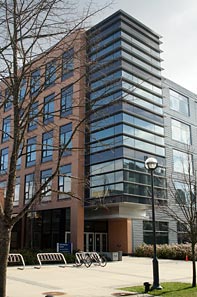We are interested in the essential process of protein transport. Indeed, about 30% of proteins that are synthesized in the cytosol will need to cross membranes in order to reach their final destination. As membranes are intrinsically impermeable, the question arises: “How does membrane passage of proteins occur? ” In short, it is an energy-dependent process that is mediated by membrane protein complexes called translocases. In the lab, we study the structure and function of the essential and universally conserved system termed the Sec translocon. This nanomachine catalyzes the transport of hundreds of different polypeptide substrates. We analyze the Sec translocon into a functional in vitro translocation system to understand the mechanism at the molecular level.
The core of the Sec translocon
At the heart of the translocon, there is a heterotrimer called the SecY/61 complex. This complex is unique: it forms both a protein-conducting channel that provides a passage for proteins across the membrane as well as a means to integrate nascent proteins into the membrane. The SecY/61 complex consists of four key structural elements: the channel, the pore ring, the plug, and the lateral gate. The pore ring and the plug domain may serve to close and to seal the channel, while the lateral gate would serve to accommodate the leader peptide of the preprotein or to release membrane protein domains into the membrane.
 The Translocon at Work
The Translocon at Work
The SecY complex cooperates with cytosolic partners to ensure the transport into or across membranes. For example, the nascent chain at the exist of the ribosome interacts with the targeting factor SRP/SRP receptor, chaperone SecB and motor ATPase SecA, that bring the preprotein to the core-translocon. Insertion of the signal peptide triggers the “opening” of SecY complex and the activation of the SecA ATPase, which pushes the preprotein across the membrane. After the signal peptide cleavage, the mature protein is released to the periplasm or into the lipid bilayer when a membrane insertion sequence is present. The exact mechanisms ensuing the membrane passage and the function of other factors such as SecD, SecF, YajC, YidC and the proton-motive force remains to be discovered.



